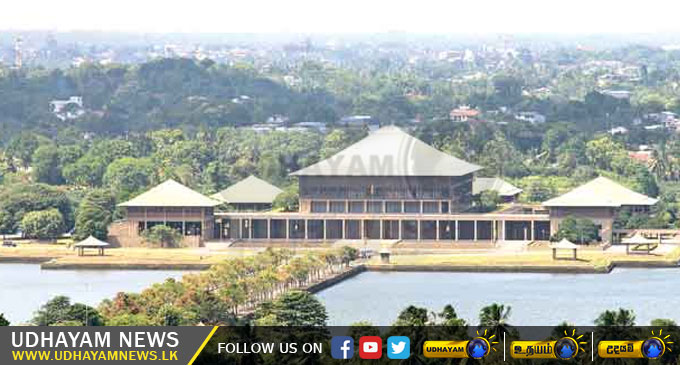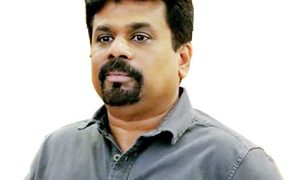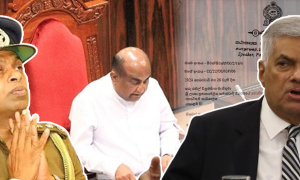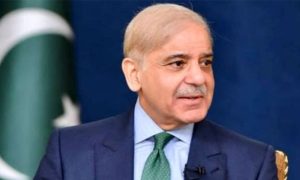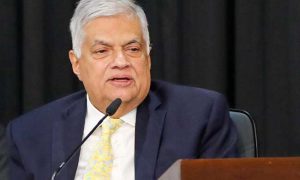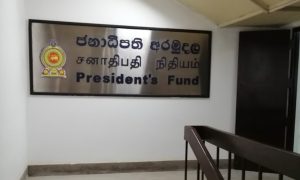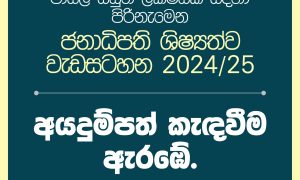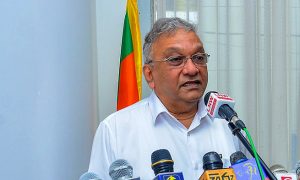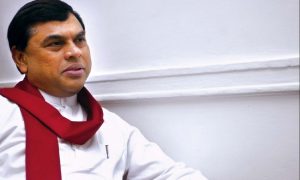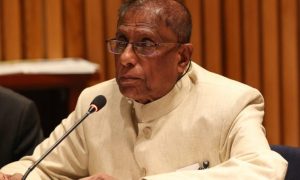(UDHAYAM, COLOMBO) – The reshuffle rumour mill, which had been shut down for some time is now back in action and the reason for that was a public statement by President Maithripala Sirisena who, while attending the opening of a cultural centre in Hambantota, commented that Fisheries and Aquatic Resources Minister Mahinda Amaraweera would be given a “better” ministry to serve the “entire” country.
The remarks were made off the cuff and almost in jest but in doing so, the President did note that the Hambantota district did have three ministers dealing with the subject of fisheries at different levels. These observations have now set tongues wagging of a possible Cabinet reshuffle, leading ministers to push panic buttons and constantly look over their shoulders.
Previously, there was widespread speculation that a Cabinet reshuffle was in the offing but that it was being deferred until the visit of the Managing Director of the International Monetary Fund (IMF), Christine Lagarde because it would have conveyed an impression of instability within the government. However, Lagarde cancelled her visit to the country and speculation of a reshuffle has resurfaced, especially after President’s Sirisena’s comments at Hambantota.
[accordion][acc title=”Central Bank Bond issue”][/acc][/accordion]
There is no doubt that some ministries are causing concern to the top echelons of the government- and that is not necessarily because of the ministers heading them. They are embroiled in controversies that have damaged the government or have affected its popularity.
For instance, the Finance Ministry is involved in the Central Bank Bond issue. Similarly, the ministries of Higher Education and Health are involved in the controversy over the South Asian Institute of Technology and Medicine (SAITM). The Ministry of Ports and Shipping is entangled in a tug of war over the Hambantota Port.
While the respective ministers in charge of these ministries are not singularly responsible for these issues, there have been suggestions that a reshuffle would perhaps offer the government the best chance of restoring public confidence and popularity.
However, a Cabinet reshuffle in the National Unity government headed by President Sirisena and Prime Minister Ranil Wickremesinghe is no walk in the park for the President and the Premier. That is because of the complexities involved in a government that includes ministers of parties which have been arch rivals for decades, the United National Party (UNP) and the Sri Lanka Freedom Party (SLFP).
It is worth noting that the 19th Amendment to the Constitution, passed by this government repealing the draconian 18th Amendment endorsed by the administration of Mahinda Rajapaksa, stipulates a limit of 30 on the number of Cabinet ministers. The current Cabinet has 45 ministers in addition to the President and the Prime Minister who also hold ministerial portfolios. The total number of ministers, including deputy ministers and assorted others, is close to a hundred.
Article 46 (1) of the Constitution states that, “The total number of (a) Ministers of the Cabinet of Ministers shall not exceed thirty; and (b) Ministers who are not members of the Cabinet of Ministers and Deputy Ministers shall not, in the aggregate, exceed forty.
However, a crafty piece of legislation is also included in the 19th Amendment, making a larger Cabinet a possibility. Article 46 (4) of the Constitution states that, “Where the recognized political party or the independent group which obtains highest number of seats in Parliament forms a National Government, the number of Ministers in the Cabinet of Ministers, the number of Ministers who are not Cabinet of Ministers and the number of Deputy Ministers shall be determined by Parliament.” This is the clause under which the current Cabinet operates.
[accordion][acc title=”National Unity government”][/acc][/accordion]
Article 46 (5) of the Constitution elaborates further on this issue and states that a “National Government means, a Government formed by the recognized political party or the independent group which obtains the highest number of seats in Parliament together with the other recognized political parties or the independent groups.”.
Therefore, it is theoretically possible for a government to offer a ministerial portfolio to one independent Member of Parliament and call itself a ‘National Government’, thereby paving the way for a Cabinet much larger than the originally stipulated 30 ministers.
Be that as it may, the current concern for the government is, even if it reshuffles the Cabinet, how it should go about doing it. Given that there are simmering tensions between the UNP and SLFP camps within the Cabinet despite the excellent relationship between the President and the Prime Minister, any reshuffle should be aimed at toning down these differences and not inflaming them further.
How best this can be achieved is the big question. A frequent grouse in the SLFP camp is that the UNP has been allocated most of the ‘prestigious’ portfolios such as Finance, Foreign Affairs, Education and Justice.
However, it will be recalled that until the general election in August 2015, the UNP held almost all of the portfolios when it led a minority government. Also, it was the UNP that emerged as the single largest party at the general election; hence it is entitled to that privilege.
It has also been pointed out that the lines between the UNP and the SLFP have become a bit blurred anyway since stalwarts such as Arjuna Ranatunga and Rajitha Senaratne, loyalists of President Sirisena who walked out with him from Mahinda Rajapaksa’s government, were in fact loyal SLFPers who were forced to contest the 2015 elections under the UNP ticket.
It is well known that a great deal of time and effort went into finalising the original Cabinet when a National Unity government was formed. Former President Chandrika Kumaratunga was also involved in the negotiations between the SLFP and the UNP and the allocation of portfolios.
There was a lot of give and take from both parties and the eventual allocation of ministries satisfied most ministers in both parties, although there will always been the odd voice of dissent.
[accordion][acc title=”Two major parties”][/acc][/accordion]
It is worthwhile noting that even the Constitution provides a direction on the appointment of Cabinet ministers. Article 43(2) of the Constitution states that “The President shall, on the advice of the Prime Minister, appoint from among Members of Parliament, Ministers, to be in charge of the Ministries so determined.” Thus, any reshuffle would require the concurrence of the Prime Minister.
In the current scenario, there is likely to be firm opposition from both major parties if there is an attempt to change a portfolio held by a UNP minister by handing it over to a SLFP Minister and, even though SLFPers may feel that they too are entitled to at least a few of the more prestigious ministries.
Therefore, the most likely outcome is a reshuffle where the personalities heading the ministries maybe shuffled around but the parties heading those ministries will remain the same. This is the only practical manner in which the already tenuous unity between the two major parties can be preserved.
Currently, President Maithripala Sirisena is on a state visit to Russia. While any changes will have to necessarily await his return to the country, the big question is whether the reshuffle will occur before the Sinhala and Tamil New Year which is due in a few weeks.
The guessing game is on but as with any reshuffle, one can be certain that no matter what changes are made there will be those who will be unhappy- and this is what the government will want to minimize. (DN)

